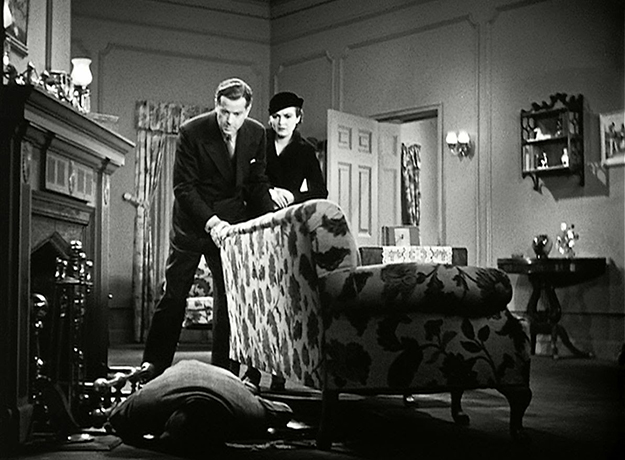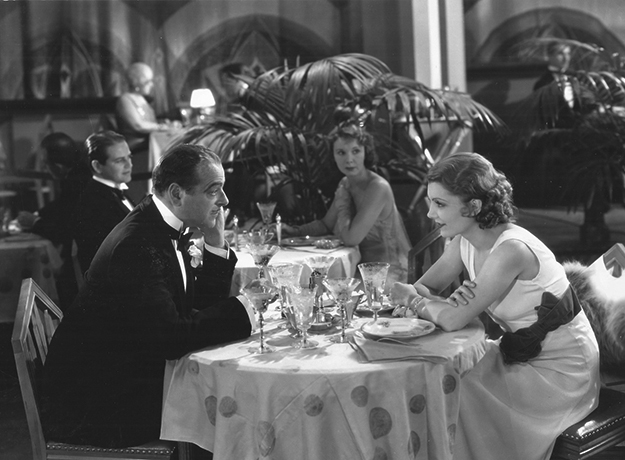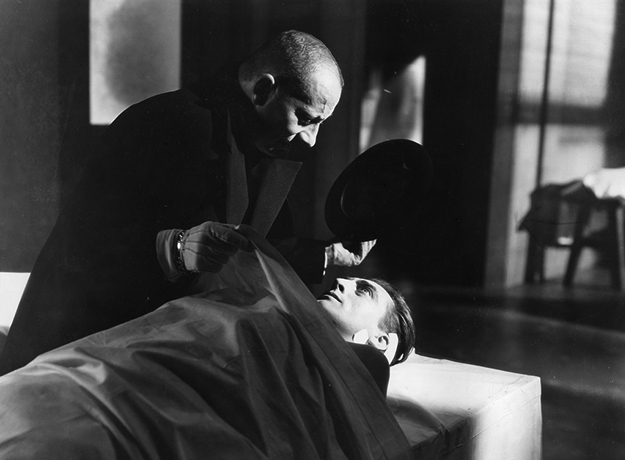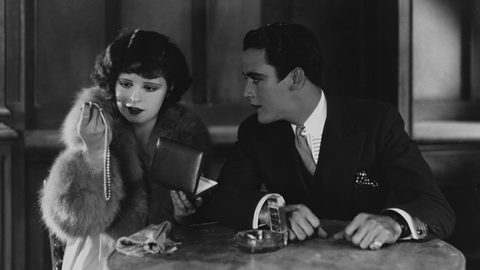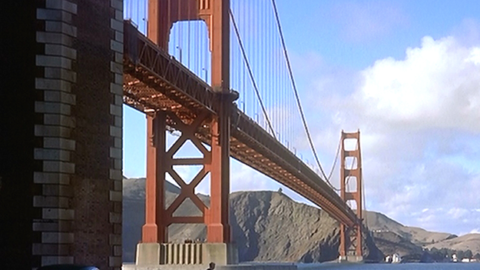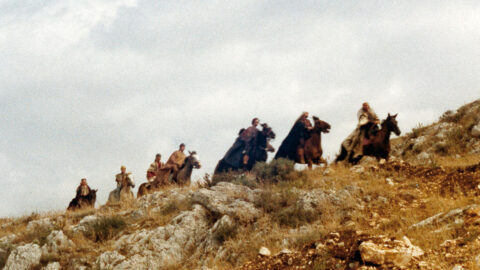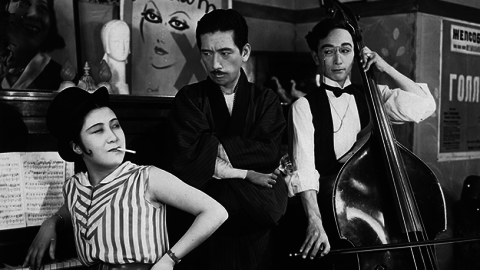Rep Diary: A Trip Down Poverty Row
The Sin of Nora Moran
Feverish, fragmented, expressionistic, The Sin of Nora Moran (1933) is one of the most formally daring films to come out of Hollywood in the early sound era. The plot is that old chestnut about the pure-hearted fallen woman who sacrifices herself for an undeserving man, but the narrative structure has the cracked logic of a dream, with subjectivity and chronology shifting underfoot. There are frames around frames, flashbacks within flashbacks constructing the story of Nora Moran (Zita Johann), a woman on death row. Her final night, recalled by the district attorney who convicted her, is broken up by shard-like glimpses of her troubled life. Yet there is something odd about these recollected scenes: in them, she already knows what’s going to happen. She is being forced to relive her past, hopelessly trying to make it turn out differently. The labyrinthine script is further embellished with dramatic cuts—from a prison cook’s knife to a hypodermic needle, from a scream to a train whistle—and with kaleidoscopic montages, delirious snippets of car crashes, nightclub floorshows, lion tamers, love nests. At first, stylistic flourishes nearly overwhelm the story, but it builds up a tormented charge over its compact 65-minute span.
This extraordinary artifact was produced by Poverty Row mogul Larry Darmour at the short-lived Majestic Pictures, and is featured in the Museum of Modern Art’s series “Strange Illusions: Poverty Row Classics Preserved by UCLA.” The Polish-born director, Phil Goldstone, is so obscure that, as of this writing, he is The Man Without a Wikipedia Entry. As a producer, he was behind two other films in the MoMA lineup, which presents sparkling new restorations of low-budget gems, probably looking better than they did on their release. Drums of Jeopardy (George B. Seitz, 1931) is an insouciantly entertaining tale of serial murder, as a mad scientist named Boris Karlov (Warner Oland) pursues a murderous vendetta against the aristocratic Russian family he blames for his daughter’s ruin. What starts out as a turgid drama turns into a snappy exercise in style, packed with shadow-play, creeping fog, keening wind, inky nocturnes, and comically feisty old ladies. The Vampire Bat (Frank R. Strayer, 1933) is equally stylish, with impressive crane shots, striking deep-focus compositions, and some exquisitely effective hand-coloring adorning another gruesomely silly plot, about a picturesque German village where corpses keep turning up drained of blood. With a cast including perennial mad scientist Lionel Atwill, Melvyn Douglas, and Fay Wray, this could almost pass for a major studio production; Majestic Pictures was known for using other studios’ sets (which in both films are lavish and handsome) and saving its meager resources for talent on both sides of the camera. Goldstone also helped independent producers Victor and Edward Halperin finance the influential White Zombie (1932), filmed on sets borrowed from Universal. Here, the zombies are not decomposing flesh-eaters but Haitians mentally enslaved by the burning eyes of voodoo master Bela Lugosi; much of the acting leaves little to choose between the zombies and normal folk, but the eerie atmosphere prefigures Val Lewton and Jacques Tourneur’s delicate horror poem I Walked with a Zombie (1943).
False Faces
While “Poverty Row” referred to a strip of Gower Street in Hollywood where small production companies made movies on a shoestring, it also applies more generally to independent filmmakers working on the margins of the industry. The best known Poverty Row auteur, Edgar G. Ulmer, who claimed that working on this fringe preserved his creative freedom, is represented by three films, including the rare Damaged Lives (1933). Though packaged as an exploitation film (“Shocking! Sinful! Scandalous!”), it was originally financed by the Canadian Social Health Council and made as an earnest warning about the dangers of venereal disease. Stilted acting lowers the temperature of the story, in which a businessman’s drunken hookup with a party girl leaves him with an unspecified “infection” that he immediately passes on to his respectable fiancée, after they marry in a quickie two-dollar wedding. A long, wordless sequence in which the afflicted wife attempts suicide achieves a certain poetry, and this historical curiosity is striking for its non-judgmental attitude towards the straying man. The film’s centerpiece, and one genuinely exploitative moment, is a surreal sequence in which a doctor walks the husband through a VD clinic, opening a series of doors to exhibit patients with various grotesque maladies. It is interesting to note that doctors or scientists play sinister, or at least unsympathetic, roles in more than half the films in this series, including False Faces (1932), a startlingly nasty little story that Lowell Sherman both directed and stars in as a sleazy, fraudulent plastic surgeon.
Made for low-rent PRC, Ulmer’s Strange Illusion (1945) is a bizarre Oedipal fantasy in which a wealthy college boy (Jimmy Lydon) suspects his widowed mother’s new suitor because of a disturbing dream he had—a dream that inexplicably predicts real events. This supernatural premonition seems redundant since the suitor is played by pre-Code cad Warren William, older but looking more than ever like a stock-company Mephistopheles, speaking in the oily, orotund baritone reserved for politicians and confidence tricksters, and grinning like a great white shark as he lecherously pursues a young girl in a swimming pool. And since the mother is played by pre-Code babe Sally Eilers, older but still quite attractive, her son’s unhealthy fixation is perhaps understandable. The plot owes much to Hamlet, with an evil psychiatrist and some bobby-soxers thrown in, but then even Shakespeare had his sources.
The Crime of Doctor Crespi
Ruthless (1948), Ulmer’s classiest movie, owes an obvious debt to Citizen Kane, not only in its focus on a tycoon who leaves a trail of betrayed and angry victims in his wake, but in its complex flashback structure and strong undertow of regret for the past. “What are we here for but to remember?” muses Sydney Greenstreet, playing the hulking ruin of a man who has been stripped of his fortune, his wife, and his self-respect. He and other characters have been summoned to a grand reception in honor of the tycoon, Horace Vendig (Zachary Scott), whose rise from poverty to power is recalled by those burned in the ascent. Scott is all reptilian charm as a man whose frail decency has been crushed by his ambition, resentment, and viperish instinct to sting the bosoms that nourish him. The screenplay has its share of clichés, but also its share of good lines (as when Greenstreet lovingly describes a vintage bourbon as “just old enough to vote”), and a relentless focus on toxic capitalist aggression—one of the writers involved was future Hollywood Ten member Alvah Bessie.
There was a direct pipeline between the Austro-Hungarian Empire and Hollywood, with many men from cultured backgrounds winding up on Poverty Row. Along with Ulmer, the MoMA series includes works by the Hungarian John H. Auer (The Crime of Doctor Crespi, from 1935, another mad-scientist saga starring Austrian Erich von Stroheim), and Viennese John Reinhardt. His quick-and-dirty Monogram noir High Tide (1947) opens with two men trapped in a smashed car on a beach, and flashes back through a maze of double-crosses and plot convolutions. Don Castle, as a private detective, exemplifies the nondescript adequacy of B movie leads, but gimlet-eyed Lee Tracy, as a scheming newspaper editor, blasts through the movie with his patented verbal machine-gun. Hollow Triumph (aka The Scar, 1948) boasts a Hungarian director, Steve Sekely, and cinematographer, the great John Alton, as well as an Austrian star, Paul Henreid, who claimed in his memoir that he took over directing the film after Sekely was fired. The stand-out in MoMA’s lineup, Hollow Triumph has a ludicrously contrived identity-theft plot but more than ample compensations: terrific, tough-minded performances by Henreid (in a double role) and Joan Bennett; some of Alton’s most ravishingly stylized chiaroscuro; and a script by Daniel Fuchs that’s full of delicious ironies and potent dialogue. “You’re a bitter little lady,” Henreid tells Bennett, to which she dryly retorts, “It’s a bitter little world.” That’s hard to dispute, but bitterness never tasted sweeter.
“Strange Illusions: Poverty Row Classics Preserved by UCLA” runs October 19 to 28 at the Museum of Modern Art.
Imogen Sara Smith is the author of In Lonely Places: Film Noir Beyond the City and Buster Keaton: The Persistence of Comedy, and has written for The Criterion Collection and elsewhere.



